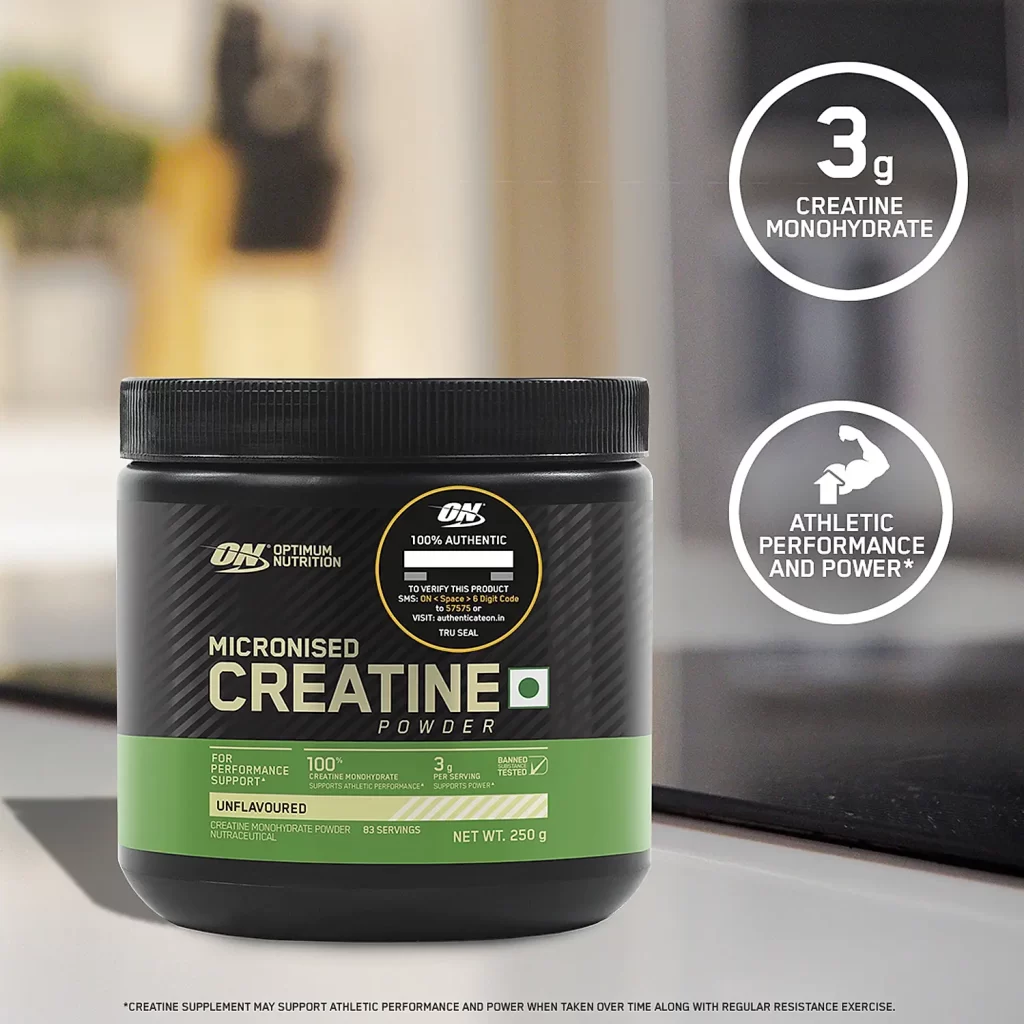Understanding Micronized Creatine: A Comprehensive Guide
Micronized creatine is a popular supplement among athletes, bodybuilders, and fitness enthusiasts. It is known for enhancing athletic performance, increasing muscle mass, and improving recovery times. This article will explore what micronized creatine is, its benefits, how it differs from other forms of creatine, and how to use it effectively. We will also address common questions in a detailed FAQ section.
Table of Contents
- What is Creatine?
- Definition
- Types of Creatine
- What is Micronized Creatine?
- Definition and Process
- Advantages of Micronization
- Benefits of Micronized Creatine
- Performance Enhancement
- Muscle Growth
- Recovery Improvement
- How to Use Micronized Creatine
- Dosage Recommendations
- Timing of Intake
- Potential Side Effects
- Comparison with Other Forms of Creatine
- Conclusion
- FAQ Section
What is Creatine?
Definition
Creatine is a nitrogenous organic acid that plays a crucial role in energy production within the body, particularly in muscle cells. It helps supply energy to cells by increasing the formation of adenosine triphosphate (ATP), the primary energy carrier in cells.
Types of Creatine
There are several forms of creatine available on the market, including:
| Type of Creatine | Description |
|---|---|
| Creatine Monohydrate | The most studied and commonly used form; effective for performance enhancement. |
| Creatine Ethyl Ester | A form that claims better absorption but lacks sufficient evidence compared to monohydrate. |
| Buffered Creatine | Designed to minimize acidity; marketed as easier on the stomach. |
| Creatine Citrate | Bound with citric acid; may be less effective than monohydrate but easier to dissolve. |
| Micronized Creatine | Creatine monohydrate that has been processed into smaller particles for improved solubility and absorption. |
What is Micronized Creatine?
Definition and Process
Micronized creatine refers to creatine monohydrate that has been processed into smaller particles (micronization). This process increases the surface area of the creatine powder, making it easier to dissolve in liquids and potentially enhancing its absorption in the body.
Advantages of Micronization
- Improved Solubility: The smaller particle size allows micronized creatine to dissolve more easily in water or other liquids, which can lead to better absorption.
- Reduced Gastrointestinal Discomfort: Some users report fewer digestive issues with micronized creatine compared to standard creatine monohydrate.
- Enhanced Bioavailability: The increased surface area may improve how effectively the body can utilize the creatine.
Benefits of Micronized Creatine
Performance Enhancement
Numerous studies have shown that creatine supplementation can enhance athletic performance, particularly in high-intensity activities such as sprinting, weightlifting, and sports requiring short bursts of effort.
- Increased Power Output: Micronized creatine can help improve power output during short-duration, high-intensity exercises.
- Improved Endurance: While primarily beneficial for short bursts of activity, some evidence suggests that it may also aid endurance performance indirectly by promoting faster recovery.
Muscle Growth
Micronized creatine has been linked to increased muscle mass through several mechanisms:
- Increased Water Retention: Creatine causes muscles to retain water, leading to a temporary increase in muscle size.
- Enhanced Protein Synthesis: It may stimulate pathways involved in muscle protein synthesis, contributing to hypertrophy.
- Improved Recovery: Faster recovery between workouts allows for more frequent training sessions, which can lead to greater muscle growth over time.
Recovery Improvement
Supplementing with micronized creatine may aid recovery after intense exercise:
- Reduced Muscle Damage: Some studies suggest that creatine supplementation can reduce markers of muscle damage following strenuous exercise.
- Decreased Muscle Soreness: Users often report less soreness after workouts when taking creatine regularly.
How to Use Micronized Creatine
Dosage Recommendations
The typical dosage for micronized creatine involves two phases:
- Loading Phase: For the first 5–7 days, take 20 grams per day (divided into 4 doses) to saturate muscle stores quickly.
- Maintenance Phase: After loading, take 3–5 grams per day to maintain elevated levels.
Timing of Intake
While timing isn’t critical, many users prefer taking micronized creatine around their workout times:
- Pre-Workout: Taking it before exercise may provide an immediate boost in energy.
- Post-Workout: Consuming it after exercise can help with recovery and replenish depleted stores.
Potential Side Effects
Micronized creatine is generally considered safe for most people when taken at recommended doses. However, some individuals may experience side effects such as:
- Gastrointestinal Issues: Some users may experience bloating or cramping.
- Water Retention: Increased water retention can lead to temporary weight gain.
- Kidney Stress: Individuals with pre-existing kidney conditions should consult a healthcare provider before using creatine supplements.
Comparison with Other Forms of Creatine
Micronized creatine offers several advantages over other forms:
| Form of Creatine | Advantages | Disadvantages |
|---|---|---|
| Creatine Monohydrate | Well-researched; effective; affordable | May cause gastrointestinal discomfort for some users |
| Creatine Ethyl Ester | Claims better absorption | Limited evidence supporting effectiveness |
| Buffered Creatine | Less acidic; easier on stomach | Higher cost; less research available |
| Creatine Citrate | Easier to dissolve | Less effective than monohydrate |
| Micronized Creatine | Improved solubility; reduced discomfort | Typically more expensive than regular monohydrate |
Conclusion
Micronized creatine is a highly effective supplement for athletes and fitness enthusiasts looking to enhance their performance and support muscle growth and recovery. With its improved solubility and potential for fewer side effects compared to traditional forms of creatine, it represents a valuable option for those seeking to optimize their training results.As with any supplement, it’s essential to consult with a healthcare provider before starting micronized creatine, especially if you have pre-existing health conditions or concerns.
FAQ Section
1. What is micronized creatine?
Micronized creatine is a form of creatine monohydrate that has been processed into smaller particles for improved solubility and absorption.
2. How does micronization benefit users?
Micronization enhances solubility in liquids and may reduce gastrointestinal discomfort associated with standard creatine monohydrate.
3. What are the primary benefits of taking micronized creatine?
The benefits include improved athletic performance, increased muscle mass, enhanced recovery times, and reduced muscle soreness.
4. How should I take micronized creatine?
A common regimen includes a loading phase of 20 grams per day for 5–7 days followed by a maintenance dose of 3–5 grams daily.
5. Are there any side effects associated with micronized creatine?
Possible side effects include gastrointestinal discomfort, water retention, and potential stress on the kidneys for individuals with pre-existing conditions.
6. How does micronized creatine compare to other forms?
Micronized creatine offers better solubility and potentially fewer side effects than some other forms but may be more expensive than regular monohydrate.
7. Can I take micronized creatine without working out?
While it’s most effective when combined with exercise, taking it without working out can still help maintain muscle stores over time.
8. Is it safe for everyone?
Most people can safely take micronized creatine; however, individuals with certain health conditions should consult a healthcare provider first.
9. Where can I find more information about micronized creatine?
For further information about micronized creatine and its effects on health and performance, you can visit Wikipedia which provides comprehensive details about various aspects related to creatinine and its connection with exercise physiology.
10. How long does it take to see results from taking micronized creatine?
Results can vary based on individual factors such as diet and exercise routine but many users report noticeable improvements within a few weeks of consistent use.By understanding what micronized creatine is and how it works within the body, individuals can make informed decisions about its use as part of their fitness regimen.



